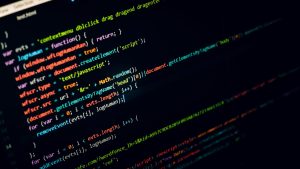Approaches to individualized learning using adaptive technology
Welcome to the world of individualized learning, where technology has paved the way for personalized education. With the rise of adaptive technology, students can now learn at their own pace, catered to their specific strengths, weaknesses, and learning styles. Gone are the days of a “one-size-fits-all” approach, as educators are now able to tailor their teaching methods to meet the unique needs of each student. In this article, we will explore the various approaches and strategies that can be used to implement individualized learning through adaptive technology. So, let’s dive in and discover how this technology is revolutionizing the world of education.
What is individualized learning using adaptive technology?
Individualized learning is an educational approach that focuses on tailoring teaching methods and curriculum to meet the needs and abilities of individual students. It recognizes that every student learns differently and may have different strengths and weaknesses. This approach aims to provide a more personalized educational experience that can better engage and motivate students.
Adaptive technology refers to any technological tool or software that adapts to the user’s abilities and needs. In education, this can include personalized learning platforms, online interactive resources, learning management systems, and computer-based programs.
Combining individualized learning with adaptive technology creates a powerful learning experience that can benefit students of all ages and abilities, from kindergarten to higher education.
Approaches to individualized learning using adaptive technology
1. Personalized learning platforms
One of the most common approaches to individualized learning using adaptive technology is through the use of personalized learning platforms. These platforms, such as Khan Academy or Duolingo, provide students with individualized lessons and assessments based on their learning needs and progress.
These platforms use algorithms and data analytics to analyze each student’s performance and provide personalized recommendations for their learning journey. Through interactive activities, games, and videos, students can learn at their own pace and receive instant feedback on their progress.
2. Online interactive resources
The internet is a treasure trove of educational resources that can be personalized to meet the needs of individual students. Teachers can use websites, such as Quizlet, to create personalized study sets for students or interactive games to reinforce learning. This approach allows students to engage with and practice the material in a way that suits their learning style.
Additionally, online resources also provide access to a diverse range of learning materials, catering to students with different interests and backgrounds. This can enhance the learning experience and keep students engaged and motivated.
3. Learning management systems (LMS)
Learning management systems, such as Canvas or Moodle, have become increasingly popular in schools and universities. These online platforms allow teachers to create personalized learning paths for students, providing them with a more tailored and structured learning experience.
LMS also allow for the integration of other adaptive technologies, such as personalized learning platforms and online learning resources, making it easier for teachers to monitor their students’ progress and provide individualized feedback.
4. Computer-based programs
Computer-based programs, such as Dreambox or Lexia, use adaptive technology to provide students with personalized lessons and assessments in specific subjects, such as math or language arts. These programs use machine learning algorithms to adjust the difficulty level of the material based on the student’s performance, ensuring that they are continually challenged and engaged.
Moreover, these programs also provide teachers with data and analytics on each student’s progress, making it easier for them to identify and address areas of improvement.
Benefits of individualized learning using adaptive technology
The use of adaptive technology in individualized learning offers numerous benefits for both students and teachers. Some of these include:
1. Personalized learning
With adaptive technology, students can learn at their own pace and receive a personalized learning experience that caters to their unique needs and learning styles. This can result in increased engagement, motivation, and ultimately, academic success.
2. Flexibility and accessibility
Individualized learning using adaptive technology allows for a more flexible and accessible education. Students can access educational materials and resources from anywhere, at any time, and on any device, making learning more convenient and adaptable to their schedules.
3. Data-driven insights
The use of adaptive technology provides teachers with valuable data and analytics on individual students’ learning progress. This data can help them identify areas of improvement and provide targeted interventions to ensure students are reaching their full potential.
4. More engaged and motivated students
By tailoring education to each student’s individual needs, adaptive technology makes learning more engaging and relevant for students. This can lead to increased motivation, as students feel more connected to their education and can see their progress more clearly.
Conclusion
Individualized learning using adaptive technology is a game-changer in the world of education. By customizing the learning experience for each student, teachers can provide a more engaging and relevant education that can lead to improved academic performance and increased student satisfaction. With the ever-evolving landscape of technology, the possibilities for individualized learning are endless, and we can expect to see more innovative approaches and strategies in the future.










